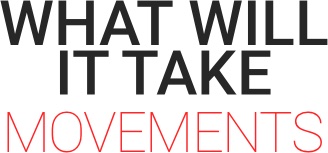I’ll never forget the first investing conference I attended where gender lens investing was discussed. From the main stage, I listened as three powerful women leaders in finance commented on how much work had been done for women in the industry. At last, the woman who gave the keynote said, “Corporate boards are starting to seriously look at the lack of women in the boardroom… We should be celebrating that a handful of companies now have at least one woman on their board!” You might think this was 20th century talk, but it was not: it was 2014.
After spending more than 20 years in philanthropy, often working with women’s funds, I have accepted that the glacial pace of change in finance on matters of gender is the direct result of the systematic exclusion of women in finance. Research from McKinsey & Company shows that women remain significantly underrepresented in the upper levels of financial services companies. And while women and men begin their careers making up roughly equal portions of entry level staff, white women account for only 17 percent of C-Suite level positions and women of color hold just one percent of C-Suite level positions in financial services.
In investing, women are underrepresented as managers especially in private equity and venture capital firms, holding only 10 percent of all senior positions in the field globally. Further, in 2017, women-led enterprises garnished less than 3 percent of venture capital globally.
What might the world look like if women controlled how investments (of financial, human, and natural capital) were made? Would we continue to promulgate a system of extractive finance, where more value is removed as a result of investment than is returned to a community? Would we define success by the presence of one woman on a board of directors? Or would women tackle problems at their root cause, using an intersectional approach to understanding the interconnected nature of all of the world’s most intractable problems, including poverty, poor health and education, and climate change? I know without doubt that it would be something closer to the latter.
At Cornerstone Capital Group, a women-owned registered investment advisor, we believe that the UN’s 17 Sustainable Development Goals (SDGs) provide a powerful framework for addressing the complex challenges of our time. We believe the goals can help align all communities—regardless of geography, income, race or ethnicity, sexual orientation, or gender—to see how we are all interconnected. And, we believe it helps provide a framework for investing that is multi-dimensional and powerful in its ability to affect the root causes of the issues affecting people and planet.
The bottom line? For investments to have impacts related to achieving gender equality and truly supporting women and girls, investors do not have to invest solely in “gender lens funds.” Our approach to gender lens investing incorporates traditional gender lens themes with an analysis of seven “access themes” that align most closely to SDG 5:
1. access to fair treatment/equal opportunity
2. access to healthcare services
3. access to financial services
4. access to telecommunication systems
5. access to education
6. access to clean water, sanitation and hygiene, and
7. access to adequate housing and living conditions
It is abundantly obvious that these factors are interrelated, so why don’t we treat them as such?
For example, research from Intel, World Wide Web Foundation, and US AID tell us that improving women’s access to telecommunication tools such as mobile phones and internet services enables better access to online financial services, educational resources, healthcare, and career opportunities. Becoming more educated and having better access to financial services may result in becoming more financially secure. Internet access seems to correspond with improved health for women, as they can learn about disease risks and prevention. Access to clean water, sanitation and hygiene, along with access to adequate housing and living conditions, clearly leads to better health and a more stable and secure living environment.
The examples are limitless, but the amount of investment that is flowing to women and to women-led initiatives (with an intersectional approach) is not.
We are all guilty of looking for easy solutions to complex problems, but it’s time that we come together to align our efforts to make life better for everyone, regardless of where they live or their gender.
To read more about intersectional approaches to investing with a gender lens, see Katherine and her team’s new research report, Advancing Access: Looking Beyond Traditional Gender Lens Investing Approaches Using Our Access Impact FrameworkTM in Support of SDG 5: Gender Equality. For more information on Cornerstone Capital Group and the Access Impact Framework that aligns investments to the SDGs, see https://cornerstonecapinc.com/what-we-do/access-impact-framework/.
__________
Katherine Pease is Managing Director, Head of Impact Strategy at Cornerstone Capital Group. In this role she helps develop and monitor impact strategies and provides contributions to Cornerstone’s professional research team. She previously served as the Principal of KP Advisors, Inc., whose mission is to help foundations, nonprofits and investors develop thoughtful, innovative approaches to address the challenges they care most about by using a variety of types of capital and other resources to make the world more just, fair and equitable. Previously she served as Senior Vice President for Philanthropic Investment and Public Policy at Gary Community Investments and as Executive Director of the Gill Foundation. In addition, Katherine is a board member of the Global Greengrants Fund and the Colorado Nonprofit Association, and serves on numerous advisory boards including the Global Climate Finance Campaign and the School of Public Affairs at the University of Colorado Denver, where she also teaches about philanthropy and impact investing.



